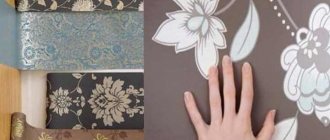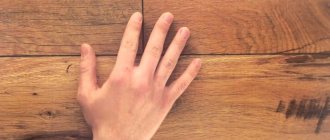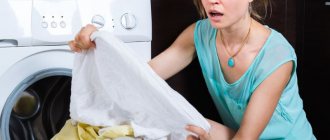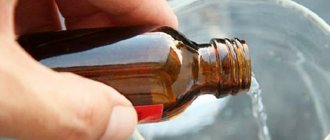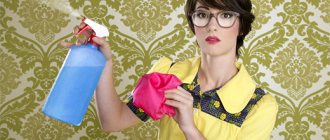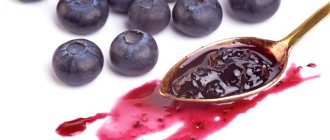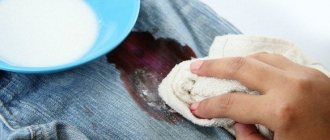Share on social media networks:
Cleaning and washing the kitchen takes a lot of time, especially cleaning the surface from grease. Many women, due to the busy pace of life, simply do not have time to take care of the kitchen every day. Regular cooking activities leave behind an unpleasant dirty mark on the countertops, walls, stove, sink and household utensils. These moments cannot be avoided, since the appearance of dust and dirt is inevitable. In our article we will try to answer the question of how to clean old grease from the walls in the kitchen. This can be done in several ways, the recipes for which we will talk about today.
How to clean a wall from greasy stains: tips
How to remove greasy stains from the wall, which constantly appear on kitchen surfaces, irritate people and are quite difficult to remove? There is only one method that prevents them from appearing - this is frequent cleaning of the kitchen. Even the best quality hood does not protect walls and ceilings from stains. This article will tell you how to remove grease stains from walls.
Remove stains
The first step is to determine the origin of the contamination. Traces of organic origin are easy to remove. Leak or water stains are more difficult to remove. Each case must be considered individually.
Remove fat from painted, whitewashed
What to do if the water-based paint is stained? It is not easy to remove such contamination from the surface. The following tools will help with this:
- To remove grease stains from walls, use a regular detergent. Apply the composition for a few minutes, rinse the problem area with a damp cloth. The spots will disappear. Remember that you need to remove greasy formations before whitewashing, which will eliminate unsightly stains on the surface;
- Soda ash will help remove old greasy stains. Mix a few tablespoons of baking soda with ½ cup of warm water. Mix well and apply to the stain. Leave for 10 minutes. Rinse off any remaining product with water;
- If none of the options helped remove the greasy formation from the wall, then there is only one solution - re-painting. You will have to paint the wall with the same paint that was originally used for it. It is best to apply the paint in two layers. If the surface is colored, then you need to find an identical color so that the problem area does not stand out.
How to wash a marker in the entrance, in the elevator
Young artists often try to express themselves through creativity and do this in the form of drawings on the walls in the entrance.
Rubbing alcohol will help get rid of marker marks on walls.
Apply the product to the problem area and rub.
Remember that on colored surfaces, after using alcohol, the paint may peel off, leaving a white spot.
Treat the surface carefully, without unnecessary pressure. An ordinary sponge will help with this.
You can find marker remover at your office supply store. Dampen a sponge with this product and treat the problem area.
To remove marker stains in an elevator, use nail polish remover. Ethyl acetate is effective in removing marker marks on walls. Apply the product to a piece of fabric and treat the stain. ?Just like alcohol, it can remove the top layer of paint with regular use.
Remove glue from masking tape
After using the tape, sticky marks remain on the surface. The following tools will help you remove them:
- Vegetable oil. Apply oil to a rag and treat the dirty area. After 10 minutes, remove the glue with a napkin;
- Vodka or medical alcohol. Apply the product to the problem area using a cotton pad and carefully remove any remaining glue;
- Loose cleaning agent. Apply to a rag and work through the adhesive formation. Suitable for use on hard surfaces;
- Glass cleaning liquid. Spray the product onto the surface and wipe with a sponge;
- Soap solution. Dissolve the soap in water and heat the mixture. Apply to the problem area. Suitable for removing glue stains from fabric;
- Stationery eraser. The glue is erased from the surface in the same way as a pencil from paper. After this, wipe the area with a damp cloth. This method is suitable for removing stains from small areas;
- You can find a special cleaner in aerosol form in the hardware department. Spray the product on the surface and then wipe with a sponge;
- White Spirit. This product can be replaced with acetone. Handle the adhesive trace carefully so as not to spoil the surface.
Clean tobacco deposits from the toilet
A regular detergent, such as Fairy, will help get rid of nicotine deposits in the toilet.
Domestos and other chemicals containing chlorine can damage the surface.
The protective varnish film on the walls can be corroded by white spirit, gasoline, alcohol and nail polish remover.
Toilet tiles can be cleaned with regular soda. The grout in the toilet will be difficult to treat.
If a nicotine coating appears on such a surface, you will have to re-paint the seams on the walls.
Use cleaner to remove nicotine stains. You can find it in the hardware department.
It is much more difficult to remove smoking stains from dermantine.
Special household chemicals will help with this, which, if desired, can be replaced with any detergent, glass cleaning liquid or laundry soap solution.
Avoid products containing alkali.
Treat the surface slowly, without circular movements or pressure. Try to wring out the rag, otherwise the surface will take a long time to dry.
Output yellow
Few people are delighted with the yellow formations on the walls. They will ruin any beautiful interior. To get rid of yellow stains on walls, follow these steps:
- Remove wallpaper, clean off putty;
- If the wall is painted, treat the dirt with a damp cloth and remove the paint with a spatula;
- Take any bleach and apply it to a rag;
- Wring out the rag and treat the wall. If the contamination is small, then carry out the procedure in several stages, moving from one area to another. This way you treat the entire area of the stain. Repeat the steps until the contamination disappears;
- Wait until the wall is dry. If the stain does not disappear after drying, repeat the steps;
- Apply the primer to the problem area using a roller and leave to dry;
- Apply oil paint to the surface and leave to dry;
- Treat the wall with putty and leave to dry;
- Sand the surface with sandpaper, apply primer to the wall again;
- Apply the same paint as the ceiling and walls to the problem area;
- Paint the wall with base paint;
- If you apply another decorative coating, you don’t have to do the last two steps.
Traditional methods
Grease stains on the wall can be easily removed using grandma's methods. They have a number of advantages: they are simple, affordable, chemical-free, and quickly and efficiently deal with grease, stains and severe dirt. We will tell you how to use them correctly so that the results are noticeable. Below are a few basic recipes, many of which are completely safe and fast-acting.
Mustard powder
You don't know how to remove grease from the walls in the kitchen? Ordinary dry kitchen mustard will help you. With its help, you can restore the former purity and shine of absolutely any surface.
Instructions:
- Wet the contaminated area with water.
- Sprinkle it generously with mustard powder.
- Wipe the surface with a clean dry cloth.
- We remove the remaining substance with a sponge previously moistened in warm water.
Important! Mustard is an excellent fat solvent, and after reading it will simply remain on your napkin. In this way you can quickly and easily clean a sink, stove, refrigerator or kitchen furniture with a protective coating. The only thing you should pay attention to is that mustard powder is not suitable for removing grease from a wooden surface.
Soap and soda solution
One of the most effective methods in the fight against fat is a combination of soap and soda. Cleaning your kitchen from dirt with such a solution couldn’t be easier. It is advisable to use a soap-soda mixture to clean kitchen utensils and household appliances.
Progress:
- We rub simple laundry soap on a grater. These manipulations will allow one piece of soap to quickly dissolve in water.
- Fill the resulting shavings with warm water so that we end up with a cloudy solution. Make sure that the water covers the soap a little, otherwise you may end up with a weak concentration of detergent.
- Wipe the contaminated surface with the resulting mixture.
- Without waiting for the soap solution to dry completely, pour baking soda onto the sponge, and then wipe the still wet areas treated with soap with it.
- Let stand for about 20 minutes.
- We wash the surface first with a damp cloth and then with a dry cloth.
This soap-soda solution can clean even heavily soiled pots. Soda is an excellent abrasive substance, and soap will not only help get rid of grease, but will also serve as a disinfectant for the treated areas.
Important! Remember one thing: the recipe can only be used for cleaning tiles, stoves and other metal elements. Soda is absolutely not suitable for removing grease from glossy or varnished coatings, as it can scratch such a delicate coating.
Oil and soda
The combination of oil and soda is quite good, and most importantly, it is an effective remedy for combating contaminated areas.
Important! It is with the help of this composition that you can delicately clean a wooden set.
Technology of use:
- Mix regular vegetable oil with soda in a ratio of 1 to 2. We get a fairly thick mixture, similar in consistency to sour cream.
- Apply a homemade mixture to problem areas.
- We go over the surface with a soft brush, thereby removing any remaining dirt and grease. Do not scrub too vigorously to avoid damaging the wood.
- Let the paste act, waiting for 10-15 minutes.
- Wash off the applied composition with a damp cloth.
Alcohol-vinegar solution
If you want to clean your kitchen furniture and disinfect it in one fell swoop, then this method is just for you. It can be safely used for washing kitchen units, utensils and various household appliances.
Stages of work:
- Mix table vinegar with alcohol in a 1:1 ratio. Alcohol can be replaced with regular vodka; it also disinfects perfectly.
- Add two parts of water to the resulting solution.
- Pour ⅓ teaspoon of essential oil into the liquid. To do this, we took tea tree oil, which is used as a cleaner not only for leather, but also for other surfaces, including kitchen utensils.
- Pour homemade product into a spray bottle. Now we spray all contaminated areas with it.
- Give the solution time to absorb; 10-15 minutes will be enough for this.
- We clean the kitchen furniture from grease using a damp sponge or cloth.
Important! Essential oil will not only do a great job with problematic oily areas in the kitchen, but will also leave behind a pleasant, light aroma.
Ammonia
Here is another effective way to solve the problem of how to remove grease stains from the wall. Ammonia can be found in any first aid kit, so the product is very affordable.
Important! Before starting all subsequent actions with this substance, we recommend that you immediately open the window, as the smell will be very intense.
Recipe for making and applying ammonia to a greasy surface:
- Mix a tablespoon of ammonia with one liter of water.
- We soak a sponge in the liquid, and then go over all the greasy places in the kitchen.
- Let the solution sit for 5 minutes and then remove it with a damp cloth.
Using this simple method, you can wash your kitchen furniture and household appliances without much effort.
Hydrogen peroxide
It is with this substance that you can wash the oven and baking tray until it shines. Not only the gas stove and household appliances suffer from everyday cooking, but also utensils that are used frequently.
Progress:
- Add baking soda to a small amount of hydrogen peroxide to obtain the consistency of sour cream.
- Apply the resulting mixture to a baking sheet, which we leave to dry for half an hour.
- Remove any remaining grease with a brush.
- Rinse the baking sheet with warm water.
Steam cleaning
It will be great if you have a steam cleaner in your home that can deal with absolutely any dirt in no time. Using hot steam, you will not only thoroughly clean a dirty surface, but also disinfect it perfectly.
A steam cleaner will save you from the following problems:
- Cleans walls, household appliances, furniture from scale and other contaminants.
- Removes remaining scale, oil and carbon deposits on dishes.
- Returns the former shine to glass and stainless steel surfaces.
- Destroys fungal formations, bacteria, and unpleasant odors in the kitchen.
Grease stain on wallpaper
Where does grease come from on wallpaper? Firstly, you can simply drop food on the wall, artistically pour soup, etc. Very often, body care creams or oils get on the wallpaper (just press the tube carelessly). But most often you and I leave greasy stains, having the habit of leaning against the wallpaper. Such spots can be seen above the back of the sofa, where the head touches the wall. Or where there is a habit of throwing your legs over the wall. The basis of such pollution is fat.
How to remove it depends on the type of wallpaper. Modern non-woven and vinyl wallpapers, which can be wiped clean or even washed, are, of course, easier to clean. The fresher the stain, the easier it will be to remove.
Grease can be removed from wallpaper:
- Soap solution, dish soap solution.
- Soda gruel.
- Potato starch paste (it should be left overnight and then removed).
- Powdered chalk.
- Gasoline. You need to act carefully and gently, trying not to touch clean areas.
- If the wallpaper is paper, it is almost impossible to remove a greasy stain without leaving a trace. You can try to apply a piece of white bread crumb to the fresh stain, or cover it with salt.
- You can also try ironing the stain through a clean white cotton towel.
Folk remedies in the fight against fat
To remove grease from walls covered with wallpaper, you can use the following “folk remedies”:
- Napkins and iron. Place a paper towel on the dirty wall, heat the iron and run it over the sheet. Be careful not to use the iron to burn a hole in the trim. The napkin needs to be changed from time to time - the fat will saturate the thin paper;
- Stationery eraser. You can try to wipe away grease stains with a regular eraser. But in this case there is also a high risk of damaging the wallpaper;
- Chalk. Chalk powder perfectly absorbs fats. Rub the chalk into the stains, then brush them off with a brush or soft cloth;
- Petrol. If you are not afraid of ruining the brightness of the wall color, use gasoline and a cloth. The liquid dissolves fat in literally 1-2 minutes.
How to remove grease stains from paper-based wallpaper
Paper wallpaper, unlike non-woven and vinyl wallpaper, is afraid of water, and therefore we will use other methods to clean it:
- Remove grease stains with chalk, as it contains components that can absorb dirt without harming the surface. Chalk should first be crushed into powder, and then sprinkled onto the dirt. After some time, clean the surface and you will see that the wallpaper is as good as new. In order to get this effect faster, you should put the chalk in a cotton cloth or napkin, and then iron the stained area through it.
- Soda will also help us. Please note that it should have a gel-like consistency, and for this it is better to mix the powder with water in small quantities. Apply the resulting mixture to a clean, soft cloth, and then gently wipe off the dirt. Continue doing these manipulations until the stain disappears. Remove any remaining baking soda using a napkin.
- An iron will also help in removing stains, and if it is fresh, attach a piece of regular toilet paper or a napkin to it, and then run the iron. Do this until the stain disappears.
Please note that the iron should be set to the minimum temperature so that the paper sheets simply do not peel off.
- Apply a thick layer of the pasty mixture of starch onto the stain, and then leave it overnight. In the morning, use a brush to sweep away the starch, and the dirt will disappear along with it.
- It is possible to remove a grease stain from wallpaper if you apply a small piece of bread to it and rub lightly until the stain disappears.
- It dissolves grease-type contaminants and gasoline well. To do this, soak a soft cloth in flammable fuel, and then remove the excess with a paper towel. For stains that are difficult to remove, a mixture of 0.5 teaspoon of gasoline and 1 tablespoon of starch is perfect. It should be applied to the stain in a thick layer, and after a couple of hours, when the gasoline has evaporated, remove everything with a brush.
- Tooth powder has also proven itself quite well. To do this, it should be diluted in water to create a creamy consistency, and then applied to the stain. We leave everything for a day, and then remove the residue with a dry brush. The powder absorbs fat, and there will be no trace of the stain!
- If the stain is small, a regular eraser will help. The main thing is not to rub the stain into holes.
Dishwashing liquid
This universal product, firstly, degreases, secondly, does not leave scratches, and thirdly, does not spoil the color/pattern.
How to use for oily plaque:
- Add the gel to a small amount of water and whisk until foam forms.
- To make the effect more effective, you can add a little peroxide (but this is only for light-colored surfaces, since peroxide washes off the paint).
- Apply the resulting liquid to the desired areas and leave for a couple of minutes.
- Wipe with a dry soft cloth.
Ammonia
The product is diluted in water (1 teaspoon per liter of liquid), treated with it, and washed off. But here you need to take care of protection, use rubber gloves and a respirator.
The effect depends not only on the product chosen, but also on how competently the cleaning is carried out. First of all, you need to prepare a stable stepladder and everything you need for washing. After that, you can start working, and to finish everything off, it is recommended to rub the surface (especially glossy) with a soft, lint-free cloth.
- Author: Natalya32
- 5
- 4
- 3
- 2
- 1
(0 votes, average: 0 out of 5) Share with your friends!
- Remove wallpaper or wash off whitewash from a contaminated surface, and clean the putty down to the plaster or drywall.
- If the surface is painted, soak the stain with a damp sponge and remove the paint and putty with a spatula.
- Allow the surface to dry completely. Then treat the surface with one of the grease or oil stain removal solutions described below.
- Rinse the surface with warm water using a sponge.
- Allow the surface to dry and then prime it with a deep penetration primer using a roller and brush.
- Wait for the soil to dry completely (24 hours).
- Paint the primed surface with oil paint in several layers and let it dry.
- Prime the area to be treated with deep soil and allow to dry (24 hours).
- Cover the surface with a layer of acrylic putty and dry for at least a day.
- Sand the putty with fine sandpaper (180-200) and prime the surface again.
- After complete drying, paint the repaired area with the same paint that was used to paint the ceiling or walls.
- Repaint the entire ceiling or wall again with your base paint.
- If you decide to apply another decorative coating or wallpaper, then you do not need to do the two previous steps.
For treatment with a solution of detergent and ammonia:
- mix one teaspoon of ammonia and any detergent,
- add the resulting solution to 100 g of warm water,
- Wipe the stain with the resulting solution until it disappears,
- Wipe the cleaned area with warm water.
For treatment with kerosene solution:
- soak a small cloth in kerosene and carefully wipe off the dirt, repeating the procedure until the oil stain disappears,
- Wipe the cleaned area with soapy warm water.
Preparing the surface for washing
It is necessary to carry out wet cleaning of walls as they become dirty, but at least twice a year. Experienced housewives advise doing this in spring and autumn. For the first time after a long winter, when the heating was on and air currents carried dust throughout the house. The second was after the summer, when dust and dirt particles got in from the street through open windows.
Before you start washing, you need to make sure that the wet coating can dry quickly. That is, the house is warm enough and there is no excessive humidity. Otherwise, the result can be unpleasant stains, dampness and even mold. Before washing painted walls, preparatory work is carried out.
Preparing the workspace
We remove all photographs, posters and paintings hanging on the walls. We do the same with any other decor. We mark the released hooks and nails so as not to injure our hands on them. To do this, we attach small pieces of bright fabric to them. We move the furniture to the center of the room so that it does not interfere with free movement.
Protecting the floor from moisture
We lay film or thick fabric along the baseboards. It will protect the floor covering from the unwanted effects of dirty water. If necessary, protect furniture in the same way by covering it with film.
Removing dust from the coating
We carry out dry cleaning, completely removing dust from ceiling skirting boards and walls. The easiest way to do this is with a vacuum cleaner turned on at medium or low power. The floor brush must be removed and a small attachment with a flat base installed. You can use a mop with a clean cloth on it.
General rules for removing greasy marks from walls
It is much more difficult to remove greasy stains from wallpaper than other types of stains. Moreover, it doesn’t really matter whether the old or fresh print has to be scrubbed off. Particles of oil or fat instantly saturate the surface, making it impossible to easily remove them “without delay”.
Regardless of the wallpaper material, you need to adhere to standard cleaning rules:
- After choosing a cleaning product, test the composition in an inconspicuous area behind the furniture. Many substances cause discoloration of paints, which can result in the appearance of a huge white spot 2-3 times larger than the area of the original greasy print.
- Avoid excessive friction during cleaning. Even the strongest non-woven layer will become unusable from intense mechanical stress.
- Do not over-wet the surface. The penetration of water into the base of the covering leads to the splitting of the glue, as a result of which the wallpaper begins to bubble and peel off.
- Proven folk methods for removing greasy stains from wallpaper help achieve great success in cleaning. Household chemicals are significantly inferior to them in effectiveness.
- It is prohibited to artificially dry (hairdryer, fan, iron) the treated areas. Because of this, yellow circles of stains will begin to appear on the wallpaper.
Following the listed rules will help protect the wall covering from unintentional damage.
Effective means
Amway
An effective concentrated degreaser, but not the most aggressive. Can remove even very old stains. It has a pleasant aroma and does not leave streaks.
Schumann
In addition to stubborn stains from grease on furniture, it can also clean household appliances. Maximum delicate, does not scratch the surface. Some people find the smell unpleasant and pungent. But it is economical - the packaging lasts for a long time.
Silit Bang
An excellent concentrate for removing multi-layered fat on kitchen surfaces. Not suitable for use on wooden materials. Valid for half an hour.
Mister Muscle
Suitable for almost all surfaces, even microwaves and vents. Kills harmful microorganisms. Has a pleasant smell.
What causes spots?
There are several reasons for the appearance of greasy stains on walls. These include small children with unwashed hands, pieces of food falling on the surface, drops of oil flying out of the frying pan when cooking food, and simple carelessness. There are several ways to eliminate such contaminants and they depend on the cause of the stains, as well as their composition. The effectiveness of the methods also depends on the material used to decorate the wall.
How to clean the walls and apron from grease in the kitchen with detergents?
There is the most common and fastest way to solve this problem - the use of special detergents and cleaning products. On the modern market they are presented in a large assortment, with different purposes, validity periods and pricing policies. Using a purchased detergent, you can quickly and efficiently get rid of annoying grease not only from the surface of furniture, but also from dishes. Modern technology is so modernized that such “helpers” include potent substances that help to ideally cope with the problem.
Household chemicals
You can wash off frozen grease using household chemicals. We advise you to pay attention to several recommendations before using special kitchen cleaning products:
- It is better to choose liquid or gel-like substances. They definitely won't scratch the furniture.
- Do not ignore the instructions on the package. Make sure the product can be used to clean kitchen facades.
- Test the substance on a small area first.
- When using household chemicals, you need to arm yourself not only with gloves so as not to get burned, but also with a respirator so as not to be poisoned by toxic fumes.
- Basically, the procedure for using any of the special products is the same: moisten the surface with water (this will soften the fat), apply the substance to the facade from top to bottom, leave for half an hour, rinse off the residue, wipe dry.
How to get rid of greasy marks on the surface of wallpaper?
First you need to find out what material they are made of. If it's vinyl
or
non-woven fabric
, then removing stains will not be difficult. The thing is that these materials are resistant to stain penetration; during their manufacture, a water-repellent layer is applied on top, which prevents the penetration of moisture. It is quite easy to care for such coatings.
Fresh spot
can be removed using a soap solution made from warm water and dishwashing detergent. Then you should take a soft cloth, wet it a little in the resulting liquid and lightly rub the stained area.
Advice! You need to start wiping the stain from the edges and moving towards the middle.
Another method for removing fresh grease stains is to use an iron heated so that you can touch it and a clean napkin or white paper. The paper should be applied to the stain and run over it with an iron, repeating the procedure until the stain disappears.
With paper
wallpaper is more difficult, but still possible. You can try to get rid of the stain with an eraser, simply rubbing it against the dirt, but you need to act carefully, because you can also wipe the hole. For fresh stains, regular bread is suitable, which is applied to the blot for a few minutes; after several procedures, the stain should be significantly reduced.
Other coatings
Walls covered with water-based emulsion are also often covered with grease stains. You can try to remove them with an eraser. If this does not help, use soda porridge - it works well with fat if it is not old.
If stains have dried to the plastic panel, powder, warm water and a medium-hard sponge will do. Wooden walls are washed with a special wood care product. Products for sanded or varnished wood vary in composition - read the instructions on the packaging carefully.
If you're worried that you won't be able to remove the stain from the wall carefully, contact a cleaning service. Your stain may be able to be removed using professional products.
